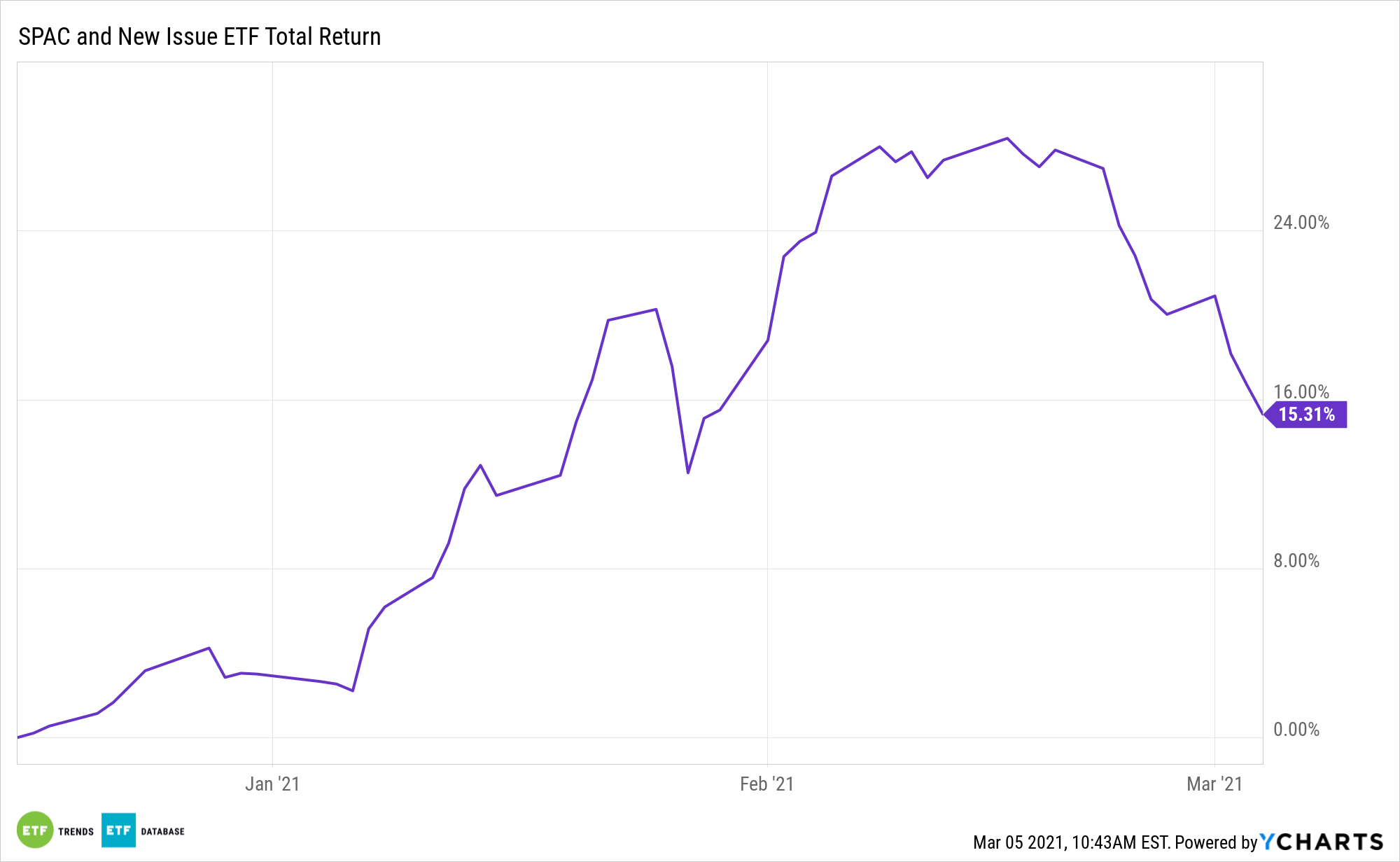With more and more special purpose acquisition companies (SPACs) coming to market, the growing asset class can be a minefield for individual investors to navigate.
Enter an actively managed fund in the SPAC and New Issue ETF (SPCX). According to Tuttle, the most appropriate strategy for managing a portfolio of SPACs is through active management, as it can be more flexible in reacting to shifting market events. This is no place for an index fund based on a rigid set of rules. When looking at investing in a SPAC, focusing on the management team is key.
There are multiple reasons why SPAC-hungry investors ought to consider the benefits of active management with SPCX.
“Is now the time to invest in SPACs, or should you steer clear? Like almost everything else in this world, it all depends on several factors; in this case, timing, valuation of the merger target, and potential equity dilution,” writes Morningstar analyst Dave Sekera. “In a previous article, we offered a primer on SPACs, and here we break down the risks and rewards that investors face at each phase of a SPAC’s lifecycle.”

Going Active in Times of SPAC Mania
With a SPAC, there’s an alternative route for a company to go public, which can be cheaper, quicker, more transparent, and involve agreements and processes within greater purview and control of the company. Because of this, they are called blank-check companies. They are generally formed by investors, also called sponsors. Sponsors usually have experience and expertise in a particular sector, and it is assumed that the acquisition targets will be companies in that sector. Many sponsors are seasoned private equity investors.
Blank-check firms are hot as the IPO process is institutionalized, cumbersome, and inflexible, especially in adapting to the Covid-19 reality where virtual roadshows are less effective. With SPAC, there’s an alternative route for a company to go public, which can be cheaper, quicker, and more transparent. Agreements and processes are also within greater purview and control of the company.
See also: ETF of the Week: SPAC & New Issue ETF (SPCX)
Picking the winners of individual SPACs can be very difficult. The ETF structure allows investors to access the most liquid SPAC IPOs in a diversified basket. SPCX allows both financial advisors and retail investors to participate in an IPO or private equity style of investing. Those are meaningful traits because many post-merger companies struggle after SPAC deals, underscoring the potential benefits of eschewing selection of individual names and embracing the fund’s active approach.
SPCX’s active management is also beneficial in that, it can act as more of a long-term investment in an asset class that isn’t designed for buy-and-hold investing.
“SPACs are not buy-and-forget investments. It’s only once a merger agreement has been announced that the real work for investors comes into play,” adds Sekera. “At this point, the investor will need to determine an independent view of the acquisition target’s value and analyze how much dilution may be suffered when the acquisition closes. For example, when a SPAC is originally developed, the sponsors receive 20% of the total shares of the SPAC but only pay a de minimis price for those shares. When the merger closes, those shares vest, thus diluting the overall equity of the SPAC.”
For more on active strategies, visit our Active ETF Channel.
The opinions and forecasts expressed herein are solely those of Tom Lydon, and may not actually come to pass. Information on this site should not be used or construed as an offer to sell, a solicitation of an offer to buy, or a recommendation for any product.








